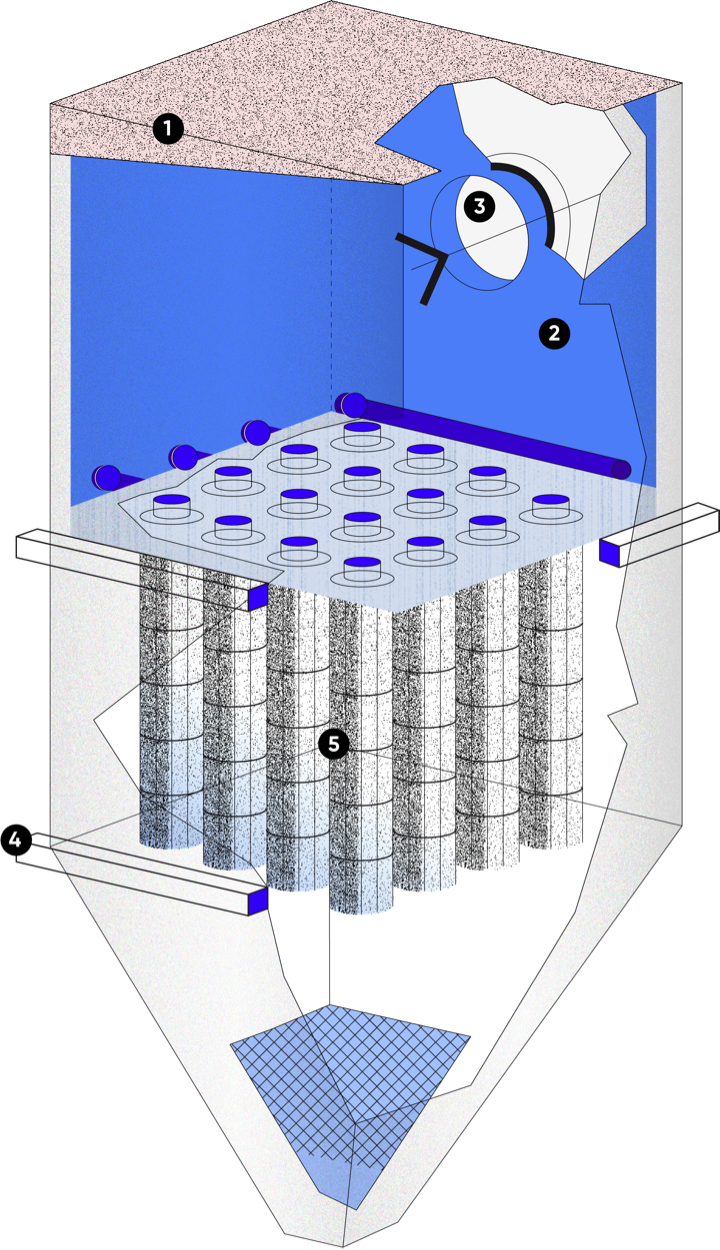
How can the exhaust gas from ships’ engines be cleaned thoroughly and cost-effectively?
Emissions from ships’ diesel engines endanger human beings and the environment. For this reason, the International Maritime Organization (IMO) defined more stringent international emission limits for sulfur and nitrogen oxides in 2016. In order to comply with the regulations, which apply as from 2020, maritime vessels must either use expensive low-sulfur fuel or install exhaust gas cleaning plants so that they can continue to use heavy fuel oil with a high sulfur content.
ANDRITZ is the only supplier worldwide to offer both wet and dry systems for exhaust gas cleaning in maritime applications. SeaSOx technologies can be installed new on all vessel types or retrofitted – for example on a large passenger ferry like the PIANA: This vessel covers 140,000 kilometers a year between the French port of Marseille and Bastia in Corsica. The ship’s engines burn a total of 16,000 tons of heavy fuel oil over this period.

The RoPax ferry Piana operated by La Méridionale, with dry exhaust gas scrubbing
© S. SauerzapfeA system for dry exhaust gas scrubbing has been used on the PIANA since May 2019. ANDRITZ was responsible for planning and design, delivery of the main equipment components, and start-up of the plant. Has this technology proved successful in practice? Answers to this question from Christophe Seguinot, technical director of the ferry operator LA MERIDIONALE:
“The PIANA is our largest vessel, carrying up to 800 passengers, and it operates on the most important route between the mainland and Corsica. We had the ambitious goal of installing a scrubbing system that filters both sulfur oxides and dust particles out of the exhaust gas. In addition, we wanted to have a closed system that does not discharge any wastewater into the sea. The question of particulate matter also had priority because of the critical views taken on this topic in Marseille and Bastia.
In the end, there was only one option available in our search for suitable technology that meets all of the criteria: dry exhaust gas cleaning from ANDRITZ and its partner company SOLVAY. With this system, the chemical substance bicarbonate is used to remove sulfur dioxide and a fabric filter to remove the sulfates and particulate forming.

1 SMART DESIGN CONCEPT
Developed to clean the exhaust gases from the main and auxiliary engines on different vessel types. Electricity consumption is very low, and the technology operates without generating any wastewater.
2 LOW-COST MATERIALS
Commercially available structural steel (carbon steel) can be used in dry exhaust gas scrubbing. High-alloy steels are not necessary, and this reduces the cost and delivery time.
3 MULTIPLE AIR POLLUTANTS REMOVAL
Besides SO2 abatement, soot and particulate emissions are drastically reduced. Dry exhaust gas scrubbing from ANDRITZ ensures abatement of ultrafine and respirable particulate emissions at the highest extent.
4 NO DRY DOCK REQUIRED
The vessel does not have to go into dry dock for installation of the dry exhaust gas scrubbing system; it can also be installed at the ship’s berth or in port. No modifications are required to the ship’s hull, such as sea chests or water discharge, nor are any additional seawater pipelines needed, which substantially shortens the time required for installation.
5 SIMPLE MAINTENANCE
Maintenance or replacement of filter bags requires a very limited shutdown time because the chambers are easy to access and the internal design is modular.
The system is running almost every day and we are very pleased with it. One main and one auxiliary engine are currently fitted with this system, and cleaning has been perfect so far. Independent measurements have shown that the sulfur dioxide emissions have been reduced to a very low level, with separation performance of more than 96 percent. In addition, 99 percent of the particulate and ultrafine particulate is removed – and this came as a very pleasant surprise. As we expect the limits for dust and particulate emissions to be tightened up in the near future, we are now well prepared.
Reactions from passengers, politicians and the media to the exhaust gas scrubbing system are positive throughout, and the complete retrofit of the PIANA should be completed in 2021. The partnership with ANDRITZ proved very productive and stable during the entire project. I am confident that we will continue our collaboration.”


